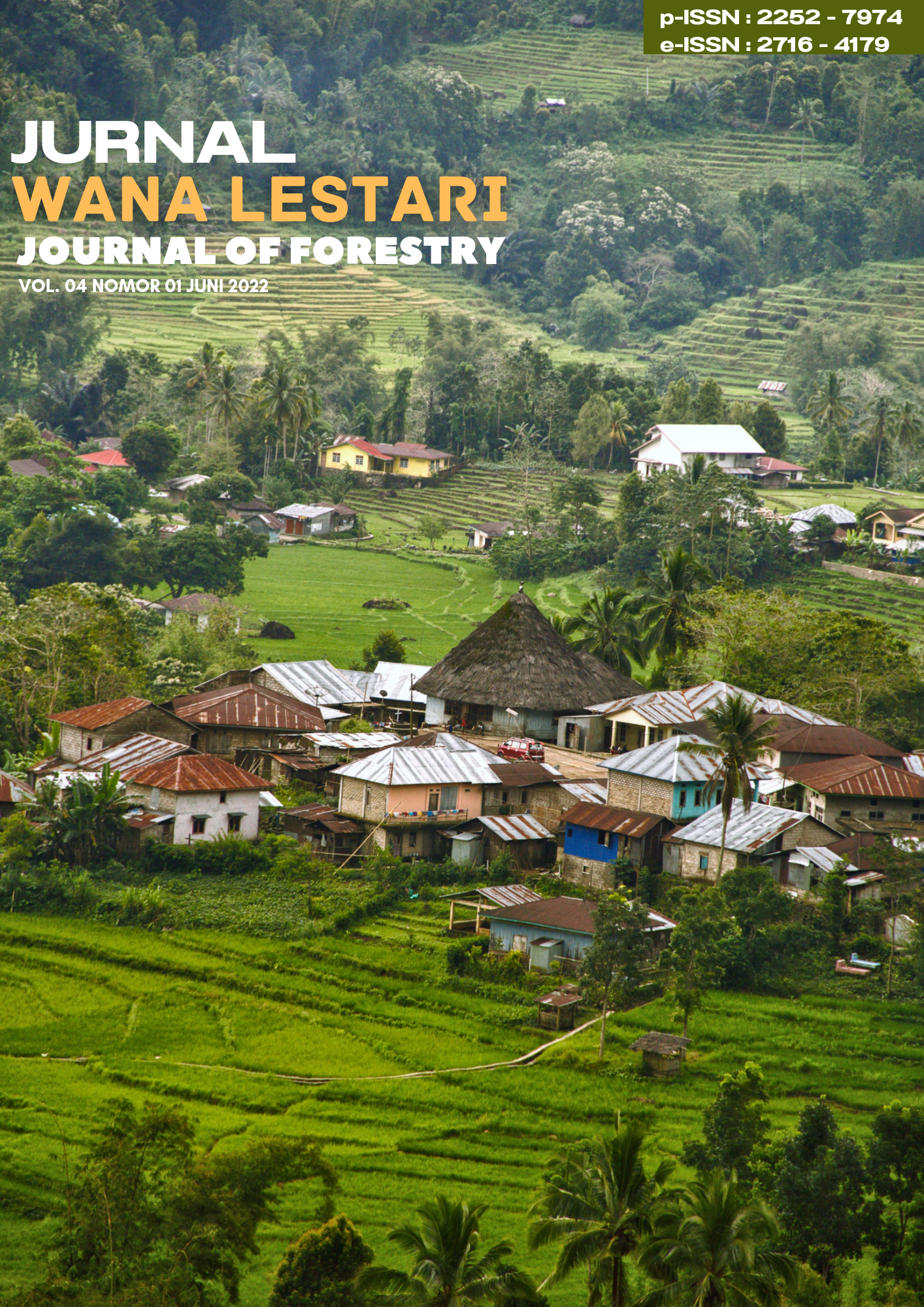ANALYSIS OF LAND SUITABILITY FOR URBAN FOREST DEVELOPMENT IN WEHALI VILLAGE OF CENTRAL MALAKA SUBDISTRICT AND RAINAWE VILLAGE OF KOBALIMA, DISTRICT OF MALAKA, EAST NUSA TENGGARA
Abstract
Urban forest is also called a collection of trees that grow in the city in a predetermined area. Determination of the location of urban forests must be evidencebased (evidence based)through surveys and land suitability evaluations. Urban Forests in this study were taken in two different places in the Malacca Regency area. The two areas are Betun (Wehali Village) Central Malaka District and Raihanek (Rainawe Village) Malaka Regency, East Nusa Tenggara Province. The study was carried out for one month, October 2020. This study used a survey method and purposive sampling of sample points with data analysis using QGIS software. The results of the mapping in spatial analysis with the technique of overlapping (Ovelay). descriptive qualitative analysis. Based on the results of the research conducted, it was found that the land suitability class of Wehali Village, Central Malaka District has four land suitability classes, namely S1 (verysuitable), S2 (fairly suitable), S3 (marginally suitable), and N (not suitable) with the area of each.respectively 0.05 Ha, 217.87 Ha, 363, 25 Ha, and 1 2.91 Ha, while Rainawe Village, Kobalima District has three land suitability classes, namely S1 (very suitable), S2 (fairly suitable),andS3 (marginally suitable). ), with an area of 41.99 Ha, 476.90 Ha and 160.35 Ha. Based on these results, several types of plants are recommended, such as Walnuts (Canarium sp), Mahogany (Swietenia macrophylla King), Trambesi (Albizia saman (Jacq.) Merr.), Fir (Casuarinaequisetifolia),and sea pandanus, sand pandanus or pudak thorn pandanus (Pandanus odorifer).
Downloads
Copyright (c) 2022 Wana Lestari

This work is licensed under a Creative Commons Attribution-ShareAlike 4.0 International License.

 Camelia K. Bano Seran(1*)
Camelia K. Bano Seran(1*)







